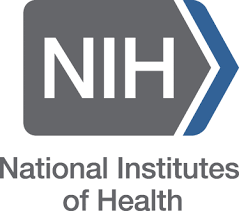NIH Releases Plan for Increased Public Access

The NIH recently released its plan for increasing access to publications and digital data from NIH funded research. The plan is the NIH's response to a memo released by the White House Office of Science and Technology Policy (OSTP) in February of 2013, which directed federal agencies with annual research and development expenditures in excess of $100 million to develop plans to increase public access to results research funded by the Federal Government.
 The plan, dated February 2015, expands upon previous actions by the NIH for increasing access to NIH funded publications (through the NIH Public Access Policy of 2008), the NIH data sharing requirements for awards at or above $500k enacted in 2003 and the Genomic Data Sharing Policy of 2014.
The plan, dated February 2015, expands upon previous actions by the NIH for increasing access to NIH funded publications (through the NIH Public Access Policy of 2008), the NIH data sharing requirements for awards at or above $500k enacted in 2003 and the Genomic Data Sharing Policy of 2014.
We have described and discussed the NIH Public Access Policy for publications in our guides on the Galter Library website, so this news article will concentrate on the data sharing requirements proposed in the new plan.
The preamble to the data sharing portion of the plan states:
To the extent feasible and consistent with applicable law and policy; agency mission; resource constraints; U.S. national, homeland, and economic security digitally formatted scientific data resulting from unclassified research supported wholly or in part by Federal funding should be stored and publicly accessible to search, retrieve, and analyze.
Definitions of Digital Data and Public Access
The plan describes digital data as “the digital recorded factual material commonly accepted in the scientific community as necessary to validate research findings including data sets used to support scholarly publications, but does not include laboratory notebooks, preliminary analyses, drafts of scientific papers, plans for future research, peer reviews, communications with colleagues, or physical objects, such as laboratory specimens.”
Public access is defined as "the availability of data for public use", acknowledging both openly accessible data and data that are accessed in a "controlled manner" to protect privacy of individuals, intellectual property concerns and security.
Data Management Plans
Under the plan, NIH funded researchers must develop data management plans (DMPs) which address access to data and long term storage of data. These plans are expected to be more comprehensive than those previously required by statute-based policies, the NIH Data Sharing Policy and other trans-NIH data management policies.
Considerations
Under the new plan, the NIH is "proposing steps to expand transparency of and public access to data resulting from NIH-funded clinical trials."
Other considerations discussed in the plan include:
- Protecting confidentiality and personal privacy of research participants, in accordance with the HIPAA Privacy Rule
- Protecting data security in accordance with the HIPAA Security Rule and the Federal Information Security Management Act (FISMA)
- Recognition of intellectual property protection in order to encourage innovation and to protect researcher investment in projects
- Understanding the balance of cost and value, stating that "NIH has recognized in some cases that the expense of archiving and sharing data may outweigh its broader utility"
Other Features of the Plan
The new NIH plan includes several sections addressing other issues regarding increased access to digital data:
- In acknowledgement of the difficulty of finding suitable repositories for digital data, the NIH plans to expand its database of existing repositories for digital data and to identify areas in which suitable repositories are lacking and may be needed.
- In addition to leveraging existing repositories, the NIH is exploring the development of a commons to share data, narrative, software and other products of basic and clinical research, to enhance public access.
- The plan describes steps to improve interoperability between digital datasets by improving metadata standards, enhancing searchability of public data and acknowledgement of software and analytical tools necessary for accessing and using data.
- Issues of long term preservation must now be addressed in NIH DMPs
- Plans for training and workforce development, cooperation with private sector data entities and guidelines for proper data attribution are addressed.
Costs
Costs of implementation of the new NIH access plan are discussed throughout the document. Costs of long-term stewardship, training, new repository development and other support for digital data management are addressed.
The NIH acknowledges that long-term storage of and public access to all data generated by NIH-funded projects is not practical, and that there are many types of data generated through NIH-funded research, so the document attempts to address the types of data that are most important for public access and long-term storage.
Timeline
The NIH has proposed a deadline of the end of calendar year 2015 for any new policies that must be developed to fulfill the new plan. The NIH plans to seek public comment on proposed policies upon their release.
The plan acknowledges that obstacles to public access may arise from requirements for deidentifying human subject data. Additionally, time to implementation of new repositories or expanding existing repositories may delay access to data.
Regulatory and statutory requirements such as requiring grantees to develop data management plans will also take time to develop and achieve consensus.
Resources and Links
The NIH plan includes numerous links to current policies and resources.
Do you need a tool to develop a Data Management plan? Northwestern University has implemented the DMP Tool. Simply click on the "Get Started" button. You will be taken to the NU Online Passport page, where you log in with your NetID and password and you can get started on creating a DMP in accordance with a number of current standards. The DMP Tool will be updated when new NIH requirements are implemented.
Updated: September 25, 2023